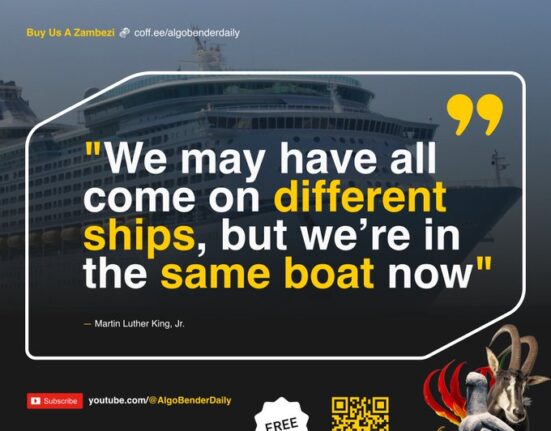As Japanese investment in Africa quietly doubles from 520 companies in 2010 to 972 by 2022, pertinent questions emerge about which African innovations successfully transcend borders and why others—equally promising—remain stubbornly local. The answers point not to technological superiority or funding rounds, but to something far more fundamental. This perspective resonates strongly with insights from my recent African Tech Roundup Podcast conversation with David Ogundeko, founder and CEO of Funema. As an impact-focused alternative investment firm operating across Nigeria, South Africa, and the US for nine years, Funema leverages a venture building support model to secure equity in promising ventures while enabling founders to build better and faster. Ogundeko has developed a contrarian thesis that challenges the prevailing notion that funding is all African founders need. Instead, his investment approach emphasises patient capital with 15-25 year horizons, as he argues: “Traditional 10-year VC timelines are insufficient for African tech development… We’re quite good at hustling, but we’re not really the best at thinking about corporate structure. Yes, we had a lot of VC money coming in [since] the early 2010s. But the problem eventually crystallised – we can turn ideas into business, but we’re not quite great at building companies.” His model prioritises deep market understanding and the evolution from service-based businesses to technology-enabled solutions. As Ogundeko explains, “We prefer working with founders who start at the service level. Why? Because we believe that’s the hardest place to be in. You have to be there with your customers, truly understand them.” Ogundeko acknowledges that Funema didn’t begin with a flashy business model, but explains that their accumulated market learnings have been systematically automated into a platform that has evolved into what could genuinely be called a pure tech business. He holds that “We can’t sustain an innovation ecosystem on hype-fuelled venture capital alone—especially if that capital isn’t patient or retreats at the first sign of global turbulence.” This philosophy of patience, market immersion, and strategic partnerships aligns with Alesimo Mwanga’s observations on the fundamentals underpinning successful cross-border expansion. Meet Alesimo Mwanga From private sector to ecosystem builder and researcher, Johannesburg-based Tanzanian-Nigerian Mwanga’s trajectory through Africa’s development landscape reflects a deep commitment to bridging innovation with tangible economic impact. As co-founder and executive director of PAWA Africa – a boutique project management company specialising in social investment projects, particularly those focused on youth, women, and entrepreneurship ecosystems – Mwanga brings an informed, critical lens to the continent’s digital economy narratives. PAWA Africa Co-founder and Executive Director, Alesimo Mwanga. | Imagie credit: PAWA Africa During our deep, in-trench collaboration on ecosystem engagement strategy and execution at 54 Collective, I witnessed firsthand her singular ability to distil complex innovation dynamics into actionable insight and delivery. Fittingly, this column arrives on PAWA Africa’s fifth anniversary – a milestone worth celebrating. Mwanga’s recent research with the Japanese External Trade Organisation (JETRO) Johannesburg has revealed striking patterns about cross-border scaling that complement my ongoing exploration of Africa’s tech ecosystem—as previously examined in my reflections on founder-funder alignment challenges . Those familiar with her previous work at organisations like 22 On Sloane and her current role as chair of the Cape Peninsula University of Technology’s Advisory Board will appreciate that in this Tech Tides Africa column hijack, she brings years of pattern recognition to bear on why certain African innovations find fertile ground abroad while others struggle to transcend geographical constraints. Mwanga’s insights. In her words: Why do some African innovations successfully cross borders while others equally promising remain local? The answer lies not in technological superiority or funding size, but in something far more fundamental – strategic partnerships. In a recent research project I consulted on with the Japanese External Trade Organisation (JETRO) Johannesburg, a striking pattern emerged. Companies like VitruvianMD (expanding AI-driven fertility diagnostics to the Middle East and Europe) and FloatPays (following TymeBank into the Philippines with earned wage access solutions) share a common success factor. Meanwhile, innovative solutions like StokFella (digitalising South Africa’s R50 billion stokvel economy) and Spaza Eats (revolutionising township last-mile delivery) remain geographically constrained despite solving critical local problems. The answer isn’t simply superior technology or greater funding. What separates these groups is their integration with institutional partners who can smooth entry into new markets. VitruvianMD didn’t just build advanced AI for sperm selection—they forged partnerships with global fertility networks and medical equipment distributors. Similarly, FloatPays didn’t just create financial wellness software—they integrated with TymeBank’s infrastructure and banking partners, riding established rails into new territories. Meanwhile, StokFella has built a remarkable solution for digitalising South Africa’s R50 billion (~ USD $2.68 billion ) stokvel economy , and Spaza Eats has created efficient last-mile delivery for township economies. Both solve critical problems, but their expansion has been slower precisely because the informal economic systems they serve are inherently local and fragmented, requiring market-by-market partnership building. This isn’t a failure of vision or execution but a reality of their market segments. Their path to international scale may ultimately depend less on additional venture funding and more on access to deals with retail conglomerates, telecom providers, or financial institutions who already have multi-market presence. Beyond digital hype For too long, discussions about Africa’s digital economy have been mired in the tired “Africa rising” narrative, a simplistic framing that obscures the complex intersection where digital innovation meets tangible economic impact. Five years into leading PAWA Africa, working with startups and organisations to improve access to capital and opportunities, I’m forced to ask hard questions: Are we chasing the right kind of capital? My sense is that Africa must diversify its funding mix and realign expectations. Figure I – PAWA Africa’s early-stage tech ecosystem analysis (2018–2023), based on funding data and insights from interviews with over 30 African startup founders and 15 investors across diverse funding categories. The current African tech funding landscape is dramatically imbalanced . Venture capital dominates at 68% of total funding, while patient capital (12%), grants (15%), and revenue-based financing (5%) play smaller roles. Based on our analysis at PAWA Africa—examining funding data from 2018-2023 and interviewing over 30 founders—a healthier mix would reduce VC dependency to 40% whilst increasing patient capital to 25%, grants to 20%, and revenue-based financing to 15%. We can’t sustain an innovation ecosystem on hype-fuelled venture capital alone—especially if that capital isn’t patient or retreats at the first sign of global turbulence. Policymakers should encourage a balance of funding sources: blending grants, patient capital, and revenue-based financing alongside venture deals. Each has its role. When we don’t diversify funding, we influence incentives in unhealthy ways—startups may chase metrics to please a specific type of investor rather than focusing on sustainable growth. Another shift is needed: outcome-based thinking. Instead of glorifying how much a startup raises (the hype), we should celebrate outcomes like revenue earned or communities served (the real value). Success through partnership One antidote to the hype-driven model is an emphasis on strategic partnerships over just funding. Some of Africa’s standout tech success stories succeeded not merely by raising money, but by joining forces with the right partners: TymeBank (South Africa) partnered with retail chains Pick n Pay and Boxer to host banking kiosks in stores, giving it instant nationwide reach without costly branches. When expanding beyond South Africa, TymeBank entered the Philippines through a joint venture with the local Gokongwei Group, launching “GoTyme.” By partnering with a local giant, TymeBank navigated regulatory hurdles and gained trust in a new market. Today, they have over 5 million customers in South Africa and are scaling in Asia. partnered with retail chains Pick n Pay and Boxer to host banking kiosks in stores, giving it instant nationwide reach without costly branches. When expanding beyond South Africa, TymeBank entered the Philippines through a joint venture with the local Gokongwei Group, launching “GoTyme.” By partnering with a local giant, TymeBank navigated regulatory hurdles and gained trust in a new market. Today, they have over 5 million customers in South Africa and are scaling in Asia. Twiga Foods (Kenya) connected small farmers to urban produce vendors, but the real inflection point came when Twiga partnered with IBM Research to add a fintech layer to its platform. Using purchase data, they developed a blockchain-based micro-loan program for shopkeepers. This partnership turned Twiga from just a supply chain company into a fintech enabler for the unbanked. connected small farmers to urban produce vendors, but the real inflection point came when Twiga partnered with IBM Research to add a fintech layer to its platform. Using purchase data, they developed a blockchain-based micro-loan program for shopkeepers. This partnership turned Twiga from just a supply chain company into a fintech enabler for the unbanked. Zipline Drone Delivery & Logistics (US) partnered deeply with the Rwandan government to launch the world’s first national drone delivery service for medical supplies. Partners like Gavi and the UPS Foundation co-funded the effort. By proving its technology in Africa through public-private partnerships, Zipline gained credibility to expand globally – it’s now delivering medical supplies in the US, Japan, and other countries. partnered deeply with the Rwandan government to launch the world’s first national drone delivery service for medical supplies. Partners like Gavi and the UPS Foundation co-funded the effort. By proving its technology in Africa through public-private partnerships, Zipline gained credibility to expand globally – it’s now delivering medical supplies in the US, Japan, and other countries. 54gene’s (Nigeria) instructive journey provides both lessons in effective partnerships and cautionary insights. The genomics startup built Africa’s first significant biobank by partnering with hospitals and research institutions across Nigeria. During COVID-19, they swiftly partnered with Nigeria’s health authorities to repurpose their genetic testing labs for nationwide testing. They also collaborated with global organisations like Illumina to obtain cutting-edge sequencing machines. While these strategic alliances enabled 54gene to scale their health innovation beyond what VC funding alone could achieve, the company ultimately ceased operations in 2023 due to financial challenges, demonstrating that even well-partnered ventures require sustainable business models in capital-intensive sectors. These anecdotes point to the fact that the real currency for scaling in Africa is partnership, not just capital. TymeBank’s and Flutterwave’s founders (and others like them) often choose strategic investors or allies that bring market access, not just money. In my research conversations with founders, many expressed a strong appetite for co-development partnerships—pairing with a large corporate or institution to co-create a solution and instantly access a ready market. This is a smarter play than simply banking a VC cheque and then struggling solo to acquire customers. A partnership can mean distribution networks, regulatory support, technical know-how, or an existing user base—all the things you can’t buy off-the-shelf with funding. Crucially, partnerships can help startups scale beyond their home borders in a way that solo efforts cannot. Africa’s markets are fragmented; expanding from, say, Nigeria to Kenya can often be as challenging (if not more) as going from Nigeria to Mexico. But if you have the right partner, maybe a multinational present in multiple countries or a development agency with regional programmes you can leapfrog those barriers. The founders of TymeBank realised it might actually be easier to expand into emerging Asian markets than into some African neighbours, because a partnership in Asia offered a clearer path. It’s a provocative idea: that an African startup might find Vietnam or the Philippines more accessible than adjacent African countries, due to regulatory and market dynamics. But it speaks to the power of thinking beyond traditional trajectories and teaming up with partners who share an aligned vision. For investors reading this, the message is clear. Don’t just ask startups “How will you scale 10x?”—ask “Who will help you scale?” Encourage and facilitate partnerships as part of the growth plan. For policymakers, it means creating genuine intentional platforms where startups can connect with corporates, both local and international. We need more tailored specific industry accelerators, sandboxes, and pilot programmes that link young tech companies with big incumbents in telecom, banking, health, logistics or agriculture. I’ve seen first-hand how a well-placed partnership can turn a struggling startup into a scalable business in a matter of months. In the end, the startups that endure—that move beyond the hype—are those that integrate into the broader economic fabric through partnerships. Japan and Africa: The power of patient partnerships Japan’s engagement with Africa represents precisely the kind of patient partnership approach I’m advocating. Figure 2 – Growth of Japanese Companies in Africa (2010–2022)—from 520 to 972 firms, marking steady expansion. Source. According to the JETRO Africa Business Survey 2022 and Japan Ministry of Foreign Affairs economic reports, Japan’s corporate presence on the continent has nearly doubled from 520 companies in 2010 to 972 by 2022, with concentrations in South Africa, Egypt, Kenya and Nigeria. What’s notable isn’t just the growth but the approach—as documented in the Africa-Japan Business Directory, Japanese investors typically prioritise quality, skills transfer and long-term value creation over rapid exits. A flagship example is NTT’s $3.2 billion acquisition of South Africa’s Dimension Data in 2010. Likewise, automotive giants like Toyota and Nissan have long manufacturing partnerships in countries like South Africa, Egypt, and Kenya—bringing not just factories, but skills transfer and supplier ecosystems. Japanese involvement is expanding into the startup arena. Japanese investors have backed African fintechs (SoftBank’s Vision Fund co-led a $400M round in Nigeria’s OPay in 2021) and created Africa-focused funds like Kepple Africa Ventures. Japan has also launched initiatives like the JETRO/JICA startup programmes which support African entrepreneurs through mentorship and training. Japanese partners tend to emphasise quality, training, and sustainability. They appear less likely to push for hyper-growth at all costs. This “patient capital” approach aligns well with the realities of African markets, which often require time to navigate regulations, build infrastructure, and educate customers. Looking ahead, African tech is at an inflection point. To truly bridge tech innovation with real economic value, we must refocus on: Balanced Funding & Sustainability: Celebrate startups for revenue growth and impact, not just fundraising. Blend capital sources so ventures can weather storms if VCs pull back. Celebrate startups for revenue growth and impact, not just fundraising. Blend capital sources so ventures can weather storms if VCs pull back. Partnerships & Ecosystem Play: The startups that thrive will be those that partner smartly with corporates, governments, and even with each other to overcome infrastructure and market barriers. The startups that thrive will be those that partner smartly with corporates, governments, and even with each other to overcome infrastructure and market barriers. Leveraging Patient Global Allies: Africa should cultivate relationships that bring not just capital but also expertise, technology, and patience. What does success look like? It looks like a farmer in Malawi using a platform to get fair prices for her produce; a patient in Cameroon receiving critical healthcare; a young developer in Cape Town getting a job because a local startup grew into a multinational; a factory in Accra assembling devices invented by Ghanaian engineers. African tech can deliver on its promise, but only if we keep ourselves honest. Let’s design funding mechanisms that reward impact. Let’s encourage our startups to be deeply local and ambitiously global, leveraging partnerships that help them bridge that gap. The next chapter of African innovation must be defined not by unicorn counts, but by value created for our people. That’s beyond digital hype—it’s the legacy we should all work towards. Editorial Note: An abridged version of this opinion editorial was first published by Business Report on 13 May 2025.
Source: https://africantechroundup.com (Link)









Leave feedback about this